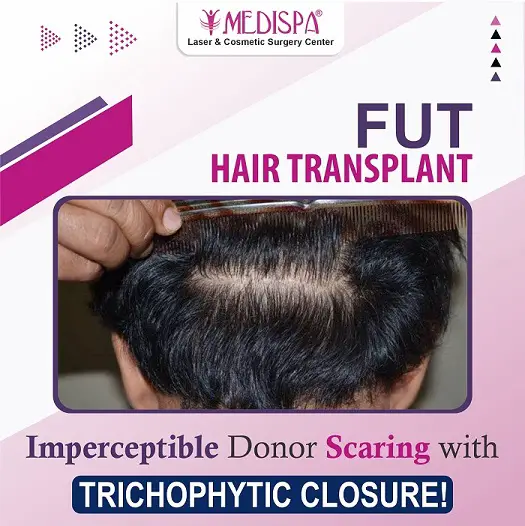A permanent therapy option for restoring the hair covering that was previously lost throughout the hair loss process without any physical morbidity or pain is surgical hair restoration. Hair transplants might be the most effective treatment option if you are struggling with hair loss and want a long-term cure.
The hair grafts are harvested from the donor region and then transplanted to the target bald area during the least invasive hair transplant procedures. The patient's own hair follicles are required for the surgery; thus the donor region must have enough hair density to achieve the desired hair covering.
Due to the city's strong demand for the operation, hair transplant in Jaipur has become quite popular. The Medispa hair transplant clinic is a leader in the field of hair restoration and is widely regarded as the best hair restoration centre in the nation. The hair transplant cost in Jaipur has significantly decreased due to the intense rivalry among clinics. The countless clinics that open each year have moved their emphasis from offering competence in this profession to marketing. However, the Medispa hair transplant clinic has a solid reputation and has successfully performed more than 10000 hair transplants with the desired results.
Dr. Suneet Soni, the owner and creator of the Medispa hair transplant clinic, strives for quality, thus he does every procedure by himself and disbelieves in franchising as a method of creating a brand.
How is the hair transplant donor area chosen?
Because only hair follicles from locations with permanent hair roots are harvested during the hair transplant operation, the results are permanent. The hair loss is caused by DHT-sensitive hair follicles that thin down or miniaturize their hair as a result of androgenic hormones. These hair follicles are located at the vertex area, which is frequently affected by hair loss, and in the front of the head.
Because the transplanted hair follicles need to be DHT resistant, the donor locations for hair transplants are chosen based on the characteristics of their hair follicles. These DHT-resistant hair follicles are not influenced by androgenic hormones or experience hair loss because they lack androgenic hormone receptors. When these hair follicles are transplanted into bald regions, they do not experience hair loss since they have the properties of the roots themselves and are permanent for life. As a result, the donor location is chosen using this theory, with the sides and back of the head being the most popular options.
What does overharvesting and violating the safe donor area mean?
What is the scalp's donor zone, please? Actually, the donor zone is the region, and more precisely, it is the region that contains the DHT-resistant or permanent hair roots. This area is significant because, if hair roots are removed from there, the effects will undoubtedly be permanent, which is the main benefit of a hair transplant.
Under the care of untrained surgeons, overharvesting is frequently attempted in an effort to provide a high density hair transplant or to make up for the greater damage to the hair grafts they inflict throughout the process. In both cases, the consequence is detrimental since the transplanted hair tends to fall out because the hair root won't survive.
In order to harvest hair roots in a safe place, it is required to select the appropriate location. There is a danger that if youover-harvest the donor region, the density of the hair there may decrease and the area would appear sparse, which will result in another unsuccessful hair transplant.
The conclusion is that finding the appropriate hands for the process is essential if you want to get the finest results and preserve your hair follicles.
Why is the donor area crucial for hair transplantation?
The donor area is critical for hair transplantation since it is the key component that, among other things, enables the following:
- To validate that the hair transplant surgery is feasible: Because the hair transplant process uses your own hairs, it can only be done when the donor region is sufficiently thick to produce enough hair transplants. To ensure the procedure's viability, the donor region is carefully examined to gauge the density of the hair.
- To determine the density of hair required for adequate coverage: The donor sites are carefully examined to determine the density of hair available for harvesting and implantation at the targeted bald spot. The most important factor in determining whether a hair transplant surgery is feasible is the availability of hair density in the donor location.
- To make sure that results are permanent: The donor region should be carefully examined to prevent overharvesting and violations of the safe donor area. Overharvesting at the donor site can reduce the density there as well as have a detrimental influence on the results' permanence.
- To ensure the proper method is used to accomplish the hair transplant: The surgeon can recommend the best method for the patient by thoroughly evaluating the donor area. The donor area's insufficient hair density points to the FUT hair transplant method, which calls for harvesting from a smaller area.






